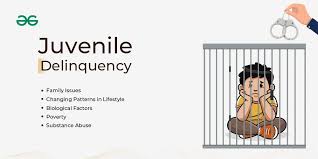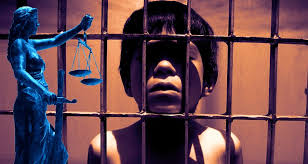Juvenile Laws at Ethiopia
In Ethiopia, the juvenile justice system has been evolving in line with international standards, with the aim of protecting children in conflict with the law while emphasizing rehabilitation, education, and reintegration into society. Ethiopia has made significant strides in recent years to improve its juvenile justice system, with special emphasis on child protection.
Key Features of Juvenile Laws in Ethiopia:
1. Age of Criminal Responsibility
The minimum age of criminal responsibility in Ethiopia is 9 years old. This means that children under the age of 9 cannot be held criminally responsible for their actions.
Juveniles aged 9 to 18 are treated as minors under the law and are subject to the juvenile justice system.
For juveniles aged 18 and above, the adult legal system applies.
2. Juvenile Justice System Framework
Ethiopia’s juvenile justice system is primarily guided by the Proclamation No. 370/2003, which is the Juvenile Justice Proclamation. This proclamation aims to provide protection and special procedures for minors in conflict with the law.
The legal framework emphasizes rehabilitation over punishment and takes into account the best interests of the child.
3. Juvenile Courts and Legal Procedures
Juvenile Courts: Ethiopia has specialized courts for juveniles, which are designed to handle cases involving minors separately from adults.
These courts prioritize the well-being of children and focus on rehabilitative measures rather than punitive ones.
The court proceedings are structured to be more child-friendly, taking into account the minor's age, psychological state, and family environment.
Legal Representation: Juveniles have the right to legal representation during legal proceedings, ensuring that their rights are protected.
4. Punishments and Sentences for Juvenile Offenders
The juvenile justice system in Ethiopia uses a range of alternative measures instead of imprisonment, such as:
Community service: Juveniles may be sentenced to perform community service instead of being detained.
Rehabilitation programs: These programs include counseling, education, and vocational training to help minors reintegrate into society.
Probation: Juveniles may be placed under probation, where their behavior is monitored, and they are provided with guidance and support.
Detention: Juvenile detention is used as a last resort. If a juvenile is detained, they are placed in juvenile detention centers, which are separate from adult prisons. Detention should not be used excessively, and the length of time in detention is minimized.
5. Rights of Juvenile Offenders
The Ethiopian juvenile justice system ensures several rights for minors involved in legal proceedings:
Right to a fair trial: Juveniles have the right to be heard in a fair trial and to have legal representation.
Right to privacy: The identity of juvenile offenders is protected to prevent stigmatization.
Right to education: Even if placed in detention, juveniles have the right to access education and participate in rehabilitation programs.
Protection from cruel or inhuman treatment: Juveniles are protected from any form of torture or inhumane treatment during legal proceedings and while in detention.
6. Diversion and Alternatives to Formal Prosecution
The Ethiopian juvenile justice system encourages diversion to avoid formal prosecution, especially for minor offenses.
Diversion programs include alternative measures such as:
Mediation and reconciliation between the juvenile and the victim, if appropriate.
Referral to social service programs or community-based initiatives aimed at addressing underlying issues such as poverty, family problems, or substance abuse.
These alternatives are used to prevent the stigmatization of minors and reduce the risk of reoffending.
7. Juvenile Detention and Rehabilitation Centers
Juveniles who are sentenced to detention are placed in juvenile rehabilitation centers or correctional institutions designed specifically for minors.
These facilities provide education and vocational training in addition to rehabilitation programs.
There is an emphasis on psychosocial support, including counseling and family reunification efforts.
International Standards: Ethiopia’s juvenile detention system strives to comply with international child rights standards, including those set by the United Nations Convention on the Rights of the Child (CRC), ensuring the child’s dignity is upheld during detention.
8. International Standards and Commitments
Ethiopia is a signatory to key international conventions regarding children’s rights, including:
The United Nations Convention on the Rights of the Child (CRC)
The African Charter on the Rights and Welfare of the Child
These commitments ensure that Ethiopia’s juvenile justice system remains aligned with international standards, emphasizing rehabilitation, protection, and the best interests of the child.
9. Challenges in the Juvenile Justice System
Despite the progress made, Ethiopia's juvenile justice system faces several challenges:
Limited resources: Juvenile rehabilitation centers often face resource constraints, leading to difficulties in providing adequate programs and support.
Overcrowding: Juvenile detention centers sometimes experience overcrowding, which can undermine the effectiveness of rehabilitation programs.
Training for personnel: There is a need for continuous training for judges, social workers, and law enforcement officials to ensure that they can effectively handle cases involving juveniles.
Conclusion
Ethiopia’s juvenile justice system has taken important steps toward protecting minors in conflict with the law. The legal framework focuses on rehabilitation, education, and social reintegration, which aligns with international standards. However, challenges such as resource limitations and overcrowding in juvenile detention centers remain, requiring ongoing attention and reform to improve the system's effectiveness.





0 comments